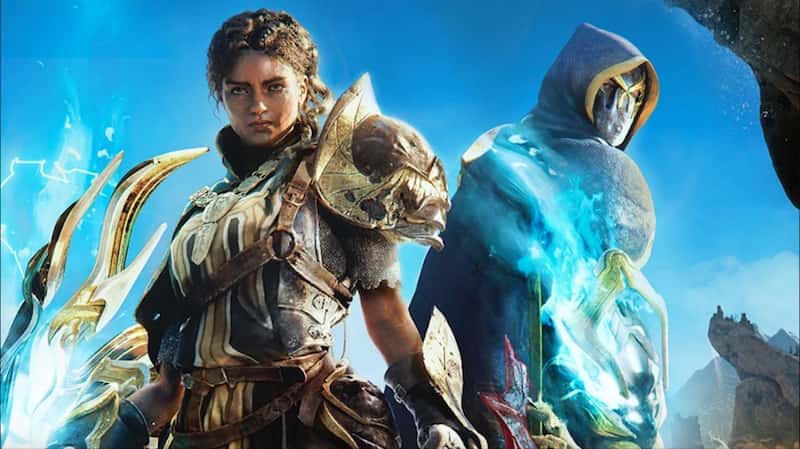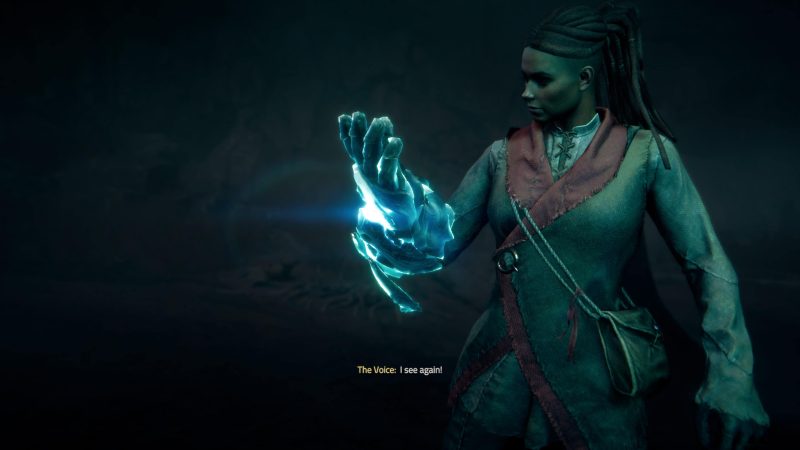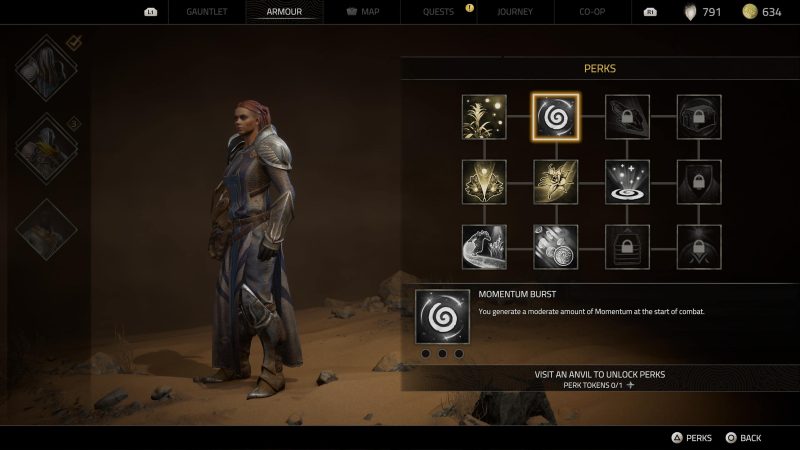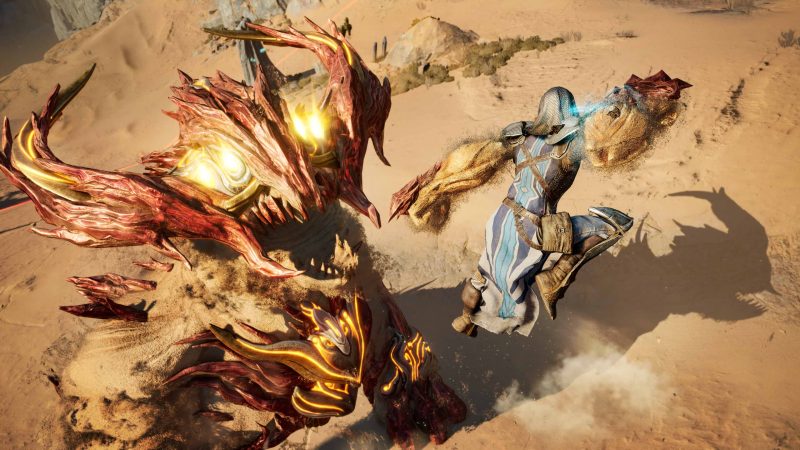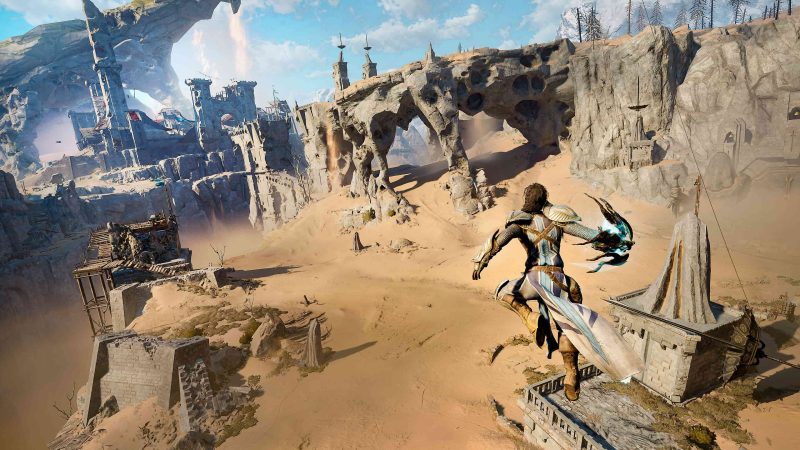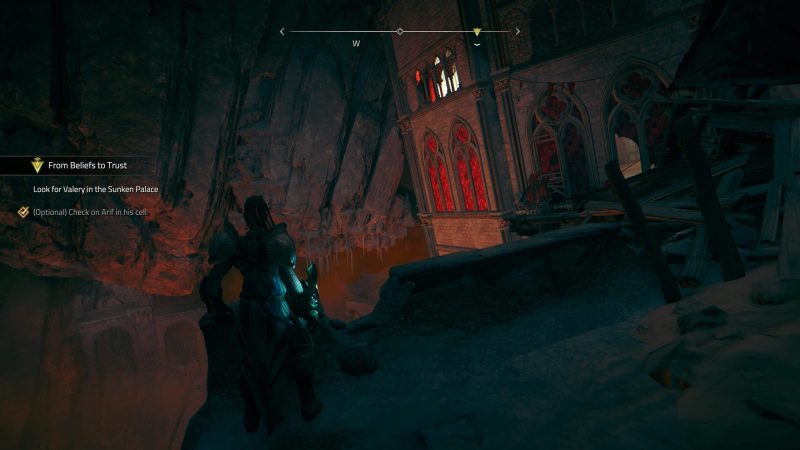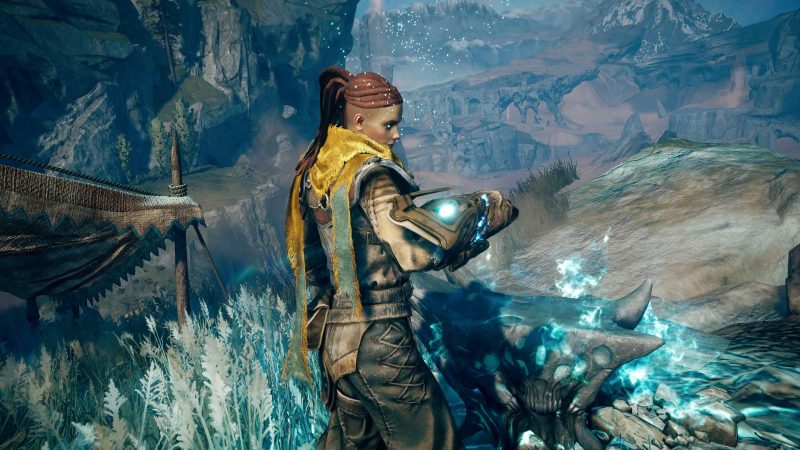Atlas Fallen Review (PS5) – Deck13 is best known for its work on title like Lords of The Fallen and the Surge series. With titles like that, a developer can easily be trusted with new ideas.
Thankfully that logic rings true for Deck13’s latest release, Atlas Fallen. Much like the aforementioned games, Deck13 isn’t in the running for game of the year, but it does create some fun and engaging gameplay with just enough lore and story to keep you going.
Atlas Fallen Review (PS5) – A Comfort-Food Surf Through The Sands
Millions of people like you are enslaved on this desert-covered world. You begin the story in an isolated camp of laborers. One of your fellow laborers went missing on a run to gather resources, and you offer to go find him. In doing so, you come across a magical talking gauntlet that attaches itself to you. The gauntlet also talks to you. Sound familiar?
This gauntlet is initially unstable, which causes it to recoil on you and knock you out in the process. You wake up to find yourself among a different group of people in a different camp altogether. Once you work together with your talking gauntlet, you find a way to stabilize the gauntlet and use it to help you and the enslaved people around you.
Overall, the story here doesn’t offer the same level of presentation as other games like it, such as Horizon or Forspoken. The story isn’t too much to phone home about either, but the writing along with the voice work do a good job of keeping you invested enough to move forward.
Equip Yourself Before The Fight
Combat makes for an interesting affair. It’s both simple and complex at the same time, but it’s still not quite that either. This comes down to what combat actually asks of you when combined with the different systems the game implements around combat.
First, complete equipment sets come automatically as one item, which you upgrade with materials you collect along the way. These armor sets come from quests rather than from enemies, so getting gear coincides directly with completing the storyline.
Upgrading equipment benefits more than the obvious reason. For each upgrade, you earn a point to put into a skill tree for passive skills. Some are much better than others, but most points are things like increased appearances of herbs.
These types of skills allow you to gather more materials to level your equipment faster, but they don’t change the game outside of that. However, they do speed up your progression, which helps with the overall pacing.
Gaining Momentum
The skill tree itself shows its worth when you reach the unlocks that improve your Momentum in combat. Momentum affects how much damage you do, and it builds up in a combination of two ways: avoiding damage and dealing damage. The above-mentioned perks can help build Momentum faster.
If you get hit, your Momentum drops. This then affects your damage output: more Momentum yields stronger attacks. To balance this out, combat moves relatively slowly without feeling dull. You still need decent reflexes, but it’s a far cry from games like Resogun or Returnal.
The balance between pace of combat and Momentum requirements isn’t necessarily perfect, but the main problem comes down to what you can see on screen. When enemies behind you attack, the only prompt is a small red arrow that is hard to notice in the heat of combat. Due to this limitation, you take many hits that just feel cheap.
Considering how much combat you see during your time with the game, you will grow tired of this part of it quickly.
I got to the point where I just navigated to the periphery of each combat zone so they couldn’t get behind me. It is extra, but trying to focus on the miniscule red arrow while managing in-your-face enemies just doesn’t work for me.
Pace Of Combat
Conversely, combat isn’t deeply challenging by any means. However, what it lacks in complexity makes up for it with how it feels. The combat experience feels frenetic without being fast, and command inputs respond perfectly. Where this is the most important is in-air combat.
As long as there are enemies in the air (or really tall ones), you can jump around and fight them without touching the ground or needing complicated controls. The aerial combat feels like its own experience that flows into the game’s traditional combat experience. As you go along, more fights include both ground and air enemies, and that’s when combat feels its best.
To boot, elite enemies have target points that must be destroyed in order to defeat them. For instance, crab enemies need their shells and their claws destroyed before they go down. Combine that with scads of smaller enemies disrupting everything, and you face some engaging scenarios along the way.
Many of the enemies, even the elites, start to look the same rather quickly. Considering the type of game that Atlas Fallen presents, I don’t think that takes away from the core experience. I say that because this is one of those games that challenges you just enough to keep you engaged but not enough to stop you from moving forward.
Cut The Fat
One unfortunate thing that Atlas Fallen suffers from is something that practically all open world games suffer from: empty space. Here, the game tries to alleviate some of that by letting you surf the sand. I’m not going to lie: this is pretty cool, even after playing for a good while.
Sure, you get numb to it, but the convenience is still there without a need to get on a horse or some other means of transportation.
At the same time, you can’t fast travel from wherever you want. As you open up the map, you find forges that let you upgrade your skills and equipment. These are the only ways to initiate a fast travel.
These forges aren’t too terribly far apart from each other, but the absence of the modern fast travel convenience regularly shows itself. Equally so, needing to travel so much elongates the game a fair amount and can easily diminish the experience.
One major tradeoff here is that Atlas Fallen can be played in co-op. The best part about this included feature is it doesn’t affect the overall experience. So, you can play the same content the exact same way in co-op or by yourself.
There are also no tricks to getting into a co-op session. Just press the Touch Pad, scroll over to the Co-op tab, and send an invite. You do need to know someone with the game, so you can’t get into a random session with another random player.
This can be seen as either a positive or a negative, depending on how you like to play.
A Fair Excursion Through The Desert
Atlas Fallen may not move mountains of sand in the grand scheme of things, what with its limited fast travel, rather empty (but gorgeous) world map, and camera oddities in combat.
Still, this game is a fun time for someone looking for a more relaxing action RPG that still feels frenetic without being taxing. Combine that with a fine story that moves you forward and co-op, and you have a recipe for a fun excursion.
Atlas Fallen is available on PS5 on August 10, 2023.
Review code generously provided by publisher.
